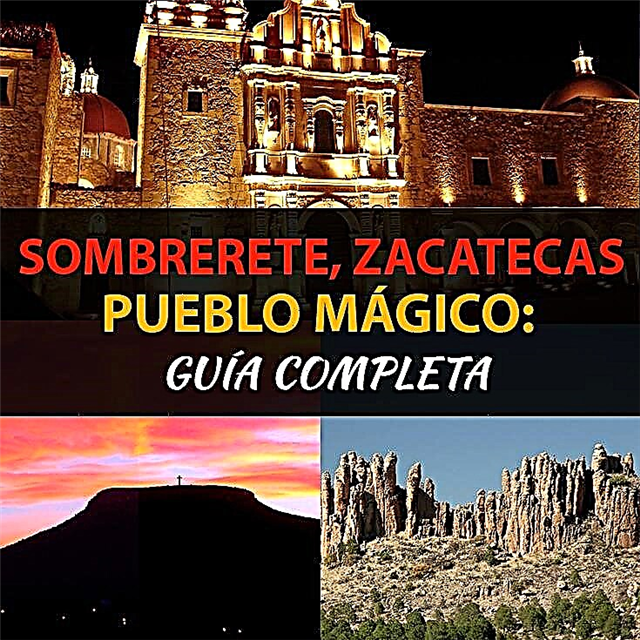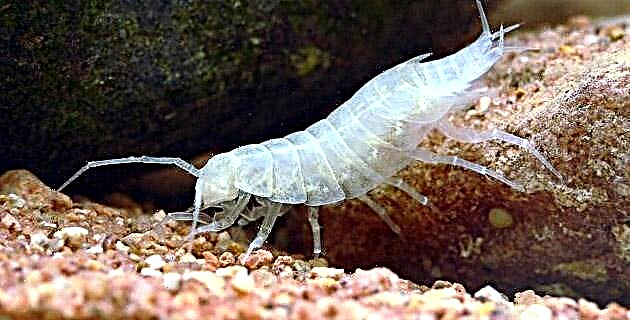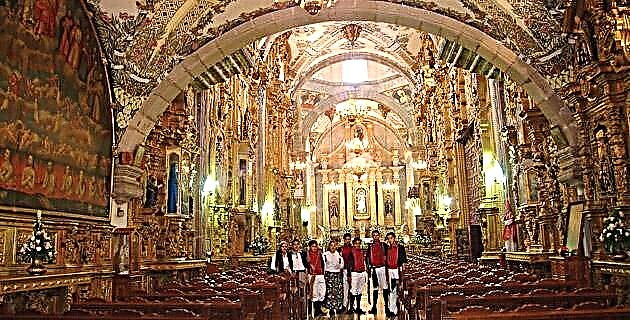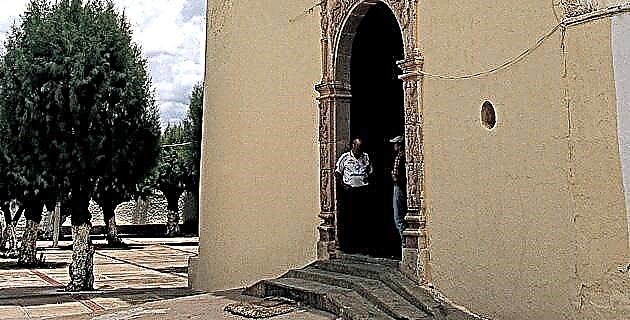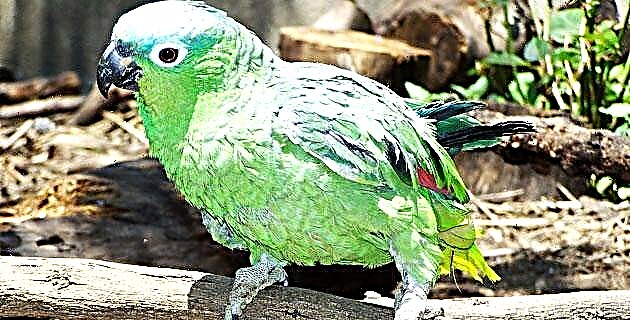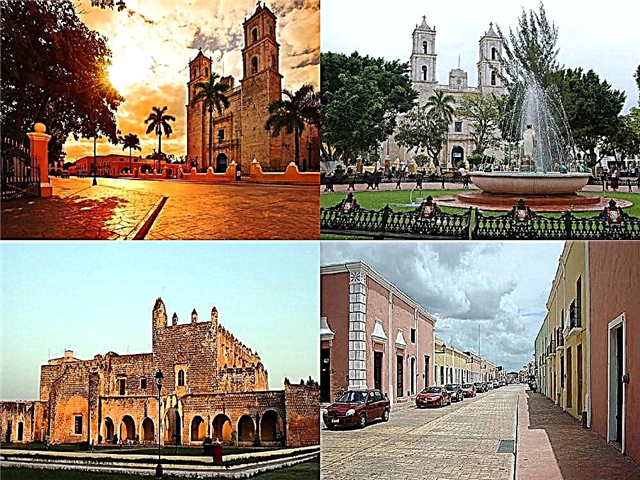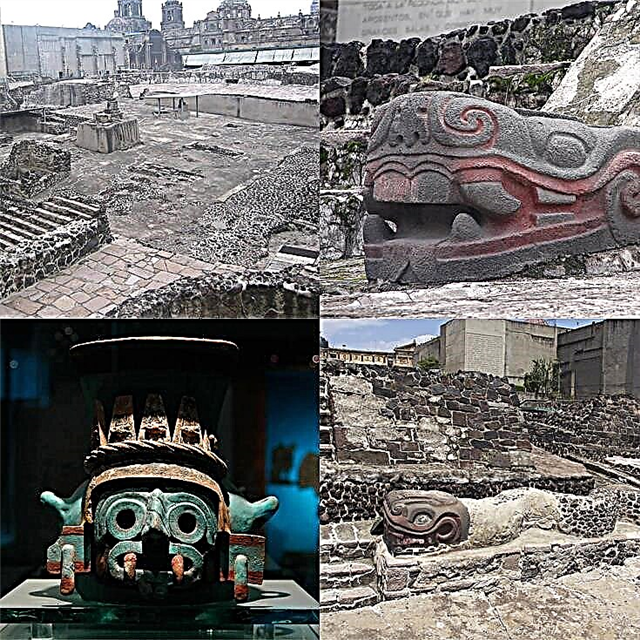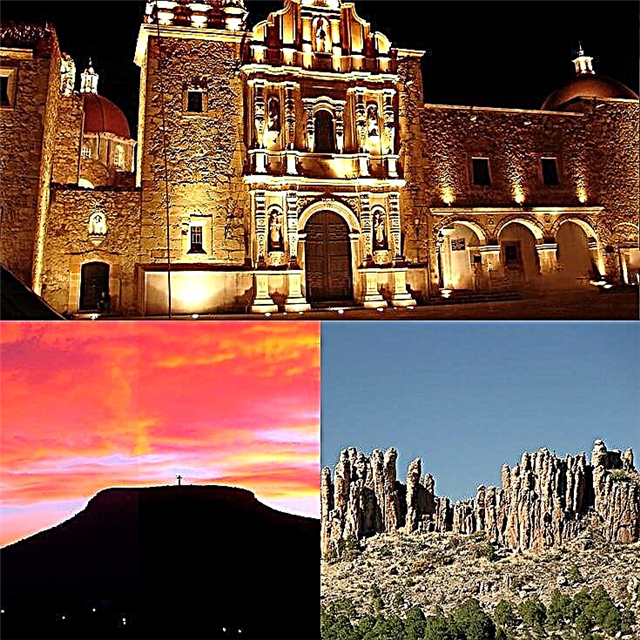Sombrerete awaits you with its mining past, its architectural heritage, its charming places and its delicious little witches. With this complete guide you will not miss anything in the Magic Town Zacateco.
1. Where is Sombrerete located and how close is it?
Sombrerete is the head of the municipality of the same name, located in the central-western sector of Zacatecas, bordering the state of Durango. It borders the Duranguense municipalities of Suchil and Vicente Guerrero, being also a neighbor of the Zacatecas municipal entities of Chalchihuites, Saín Alto, Jiménez del Téul and Valparaíso. From viceregal times and until the beginning of the 20th century, Sombrerete lived on the wealth of its gold, silver and other metal mines, which gave it prosperity before the period of decline that sooner or later affected the mining enclaves. The era of splendor bequeathed an architectural heritage, which together with its natural beauties, elevated the town to the category of Mexican Magical Town. Sombrerete is 171 km away. from the city of Zacatecas, through federal highway 45, traveling from the state capital heading northwest towards Fresnillo.
2. What is the history of the town?
The first settlers of the territory were Chalchihuites and Chichimecas Indians, who led a sedentary life and it is believed that they were decimated by the nomadic indigenous peoples. The first Spaniards arrived in 1555, led by Juan de Tolosa, in the company of Franciscan friars and allied Indians. The conquerors discovered silver in the place and decided to settle. Mining exploitation grew to make Sombrerete one of the most prosperous sites in Mexico. At the beginning of the 20th century, the mining decline arrived and Sombrerete reoriented itself towards agriculture and breeding, which continues to be one of its economic sustenance, along with tourism.
3. How is the climate of the town?
Sheltered at its altitude of 2,305 meters above sea level, the city of Sombrerete enjoys a mild and dry climate. In the winter months, the average temperature ranges between 10 and 11 ° C, while in summer the thermometer rises to the range of 19 to 21 ° C. At the highest points of the municipality it snows in winter. Starting in March, the temperature begins to rise in Sombrerete and reaches its maximum monthly average in June, when it reaches 21 ° C. In cold months, temperatures below 5 ° C are not uncommon, so you should anticipate warm clothes if you travel at that time. In Sombrerete it rains little, only 619 mm per year, highly concentrated in the July-September quarter.
4. What are the most relevant attractions of Sombrerete?
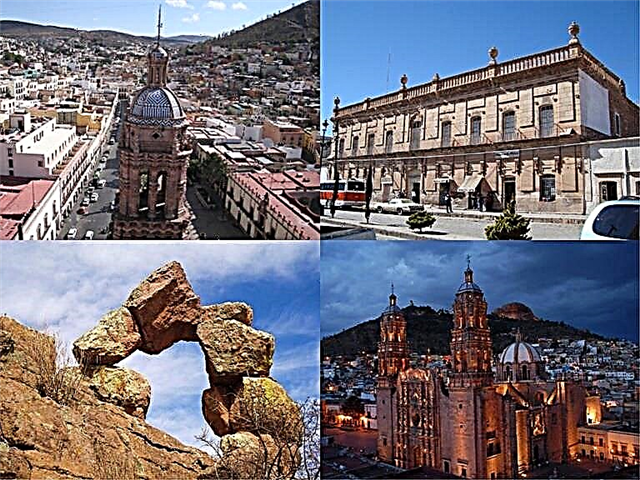
Sombrerete combines architectural attractions, particularly religious buildings, with archaeological sites and spectacular natural landscapes. The Sierra de Órganos is a national park that stands out for its curious rock formations. Altavista was a center of the Chalchihuite culture and its on-site archaeological museum shows magnificent testimonies of this town linked to the Chichimecas. The Chapel of Santa Veracruz, the conventual complex of San Francisco de Asís, with its rare temple of the Third Order; and the Villa de Llerena Museum, are must-see places in the Magic Town.
5. What is there to see and enjoy in the Sierra de Órganos?
This national park is located about 60 km. de Sombrerete and its great attraction are the rocky structures of whimsical shapes that make up the landscape. The popular wit has baptized the formations with names such as La Ballena, Cara de Apache, El Águila and Cabeza de Serpiente, among others. Some stones are shaped like towers, castles and even monks of enormous stature, but the place owes its name to the formations that resemble the flutes of a gigantic organ. The rocky slopes of the sierra are used for climbing and rappelling. In the fauna of the place you can find coyotes, white-tailed deer, quail and hares.
6. Where is the Altavista Archaeological Museum located and what does it contain?
This site museum which is located 55 km. de Sombrerete, is dedicated to the culture of the chalchihuites, in what was their main ceremonial center in pre-Hispanic times. In a building excellently integrated into the desert environment, the museum shows the origin, the era of splendor and the period of decadence of this civilization linked to the Chichimeca. Among the objects and ornaments exhibited, it is worth highlighting the glasses decorated with the serpent and the eagle, two animals of first relevance in the Mesoamerican pre-Columbian culture. These pieces were worked with the decorative technique of pseudo-cloisonné. The museum is open to the public every day from 9:00 AM to 4:30 PM.
7. What is in the Chapel of Santa Veracruz?
This religious building dates back to the 17th century and is located next to the convent of the Capuchin Poor Clare nuns, who come daily to pray. The chapel has the peculiarity that inside there are no benches, but 135 crypts in which the remains of anonymous people rest. On the main façade we can see the semicircular arch and the choir window, which is triangular in shape and has a stonework frame. The floor of the chapel is made of wood, as is the ceiling, which features striking decorative elements, such as corbels and engraved crumbs. The main attraction of the chapel is its golden altarpiece, in Baroque style.
8. What is the Convent of San Francisco de Asís like?
It is a group consisting of the convent, the temple of San Francisco de Asís and that of the Third Order. The first building was built in the 1560s, but it was demolished, dating the current one to the 1730s. It is one of the most visited places of religious worship in Zacatecas, receiving pilgrims from both Mexico and abroad. In the temples, San Francisco de Asís, San Mateo and Nuestra Señora del Refugio are venerated. The baroque style predominates in the complex, with touches of 18th century viceregal architecture.
9. What is the rarity of the Temple of the Third Order?
This elliptical chapel that is part of the convent complex of San Francisco, stands out for its Renaissance-style façade and above all for a unique vault in the world, supported by only two arches and built with the low-density porous gravel that was generated in the smelting furnaces installed in the precious minerals processing farms. In 2012, the dome underwent a rehabilitation process to preserve this historic Mexican architectural gem.
10. What is there to see at the Villa de Llerena Museum?
Before becoming a museum in 1981, this building erected in the 18th century was the private mansion of a wealthy family from Sombrerete, a post office and even the local political headquarters of the Institutional Revolutionary Party. The house was refurbished and today it houses a collection of documents, photographs and objects related to the history of the Pueblo Mágico. Among the most interesting pieces on display are the first parish clock and the shoe repairman used to restore Pancho Villa's boots. The museum is located in Los Portales, opposite the temple of San Juan Bautista.
11. What is the local gastronomy and crafts like?
The culinary symbol of Sombrerete is the witches, rich corn chunks stuffed with beans, meat and potatoes, which get their name because they "fly" (end up) like witches. The most famous witches in town are those that have been prepared for three generations by the Bustos family, who sell up to 700 units a day to locals and tourists. Other local delicacies are the birria de cabrito and the enchiladas miners. Quince wine and rompope are the emblematic drinks of the Pueblo Mágico. True to its mining past, the artisans of Sombrerete make beautiful pieces of gold and silver, such as necklaces, earrings and other accessories.
12. When are the main fiestas in Sombrerete?
Like good Zacatecas, the people of Surrete have a tight annual calendar of celebrations. During the first 9 days of February, the Candelaria Regional Fair is held, an occasion in which the best regional products are shown amidst cultural events and popular celebrations. On May 3, the Holy Cross is celebrated, with typical music and dances, and in mid-June it is Saint Peter and Saint Paul. On June 6, they commemorate the founding of the town and on July 27, the Fiesta de la Noria de San Pantaleón takes place, with the typical rondallas, which are groups of stringed instruments and tambourines.
13. Where can I stay and eat?
Hotel Avenida Real, located in Aldama 345, is a small and cozy establishment located in the center, close to places of interest and restaurants. Hostal de la Mina, on Avenida Hidalgo 114, and Hotel Conde del Jaral, on Hidalgo 1000, are two other clean and simple accommodations, with basic services. We already told you that the best place to eat the typical little witch of Sombrerete is the place of the Bustos family. Apart from the hotels, the restaurants Villa de Llerena, located on Avenida Hidalgo 338, and Taquería Freddy’s, on the extension of Avenida Hidalgo 698 B, are two other places to eat something in Sombrerete.
Our Guide to Sombrerete concludes by wishing you a fascinating journey through the Magical Town of Zacateco. We only have to ask you to leave us a brief comment about how you found the guide and if you think we should add some other places of interest. See you soon.